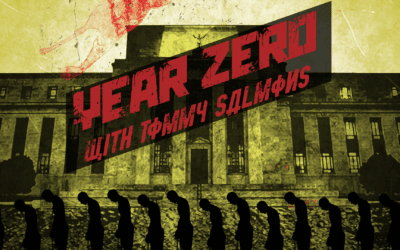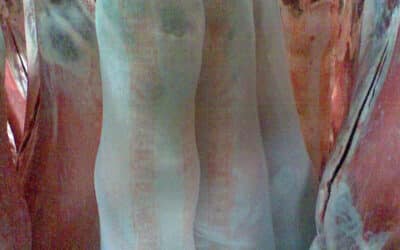Perhaps you’ve watched the YouTube video of the “students” at Evergreen State College screaming racist slurs about whites, as they tried without success to form intelligent thoughts in a meeting with the college president.
If you’ve watched it, my condolences for the resulting brain damage. If you haven’t seen it and are a masochist, it can be watched at the following link.
On a related note, I recently read the book, White Trash: The 400-Year Untold History of Class in America. I’ll explain momentarily how this is related to the Evergreen incident.
This makes at least 1,500 scholarly books that I’ve read since my college years long ago, not counting the book that I authored. All of that reading has made me realize how little I knew about the world in college and how little I still know, as I will prove herein.
Judging by their stunning display of ignorance and inarticulateness, the Evergreen students and other collegiate racists will never be learned enough to realize how little they know. Their sophomoric racial dogma, or Summa Gens Theologica, can be summarized as follows: Whites are inherently evil, because they come from privilege, have oppressed nonwhites throughout history, and are living on wealth taken by force from other races.
In this stunted thinking, whites are an anomaly among human beings instead of a reflection of universal human nature and a product of historical forces. It takes a special kind of ignorance not to understand that if the Mongols or Comanche or sub-Saharan Africans or scores of other races had developed sophisticated sailing ships, cannons, muskets, and administrative states, they would have engaged in just as much if not more conquering, colonizing and enslaving—but probably without also developing classical liberal values that enable college students to make fools of themselves without being imprisoned or killed.
Then there is the complicated matter of what constitutes a privileged white person. Take Hispanics, who are seen by collegiate racists as fellow travelers in racial grievances. But should they be exempted from hatred?
To answer this question, consider that the word “Hispanic” means someone with genetic roots in the Iberian Peninsula.
Note to millennials who never learned geography and history: The peninsula is part of white Europe and is the home of Portugal and Spain, the very same nations that inflicted the worst brutalities, genocides and diseases on native populations in the Americas.
Many Portuguese and Spaniard conquerors mixed their genes with the native populations, while others didn’t stray sexually from their own race. As a result, Hispanics today throughout the Americas can have a bloodline that ranges from 100% white to 100% Native American, with most falling somewhere in between.
This leaves the collegiate racists with a dilemma: Which Hispanics should they hate for being white? The ones with 100% white European blood, the ones with 75%, the ones with 50%, or the ones with just a tad?
On a more personal note, how do they rank my whiteness on their hate scale? After all, I’m a swarthy descendant of Italian peasants, who, given the history of the races that have crisscrossed the Italian Peninsula, probably passed on to me a mix of Greek, Egyptian, Persian, Mongol, and African blood, with dashes of DNA from Muslim slave traders and their human goods. Should I be hated more or less than a Hispanic? Or how about my Swedish/Scots-Irish wife, who hails from the Allegheny Mountains of rural Pennsylvania, a renowned center of white privilege and power that is comparable to Manhattan and Santa Barbara? (Dear Millennials: That was tongue in cheek.)
Fortunately, with advances in bioscience, the racists don’t have to resort to the Nazi way of identifying races by skin color, hook noses, hair color, and other physical features. When they get enough political power to run the government, the racists can use DNA analysis to distinguish between in-favor and out-of-favor races.
Of course, as any thinking person knows, it’s a trope that all whites are privileged oppressors. This is made clear in the aforementioned book: White Trash: The 400-Year Untold History of Class in America, by Nancy Isenberg, a professor of history at Louisiana State University.
As the book details, many whites are part of a large underclass, an underclass that has existed since the days of the early colonists. The roots of the underclass go back to the indentured servants, criminals, and other undesirables who were shipped to America by the English ruling class. Denied voting rights and property ownership in the following decades, the offspring of these outcasts were treated nearly as badly as slaves and even seen as inferiors by freed blacks. Not only that, but the institution of slavery kept them poor, because they had to compete in hardscrabble farming and unskilled jobs with cheaper slave labor.
This discrimination continues today, with the poor and uneducated white underclass being derisively labeled as white trash, hillbillies, rednecks, and other pejoratives. Hillary Clinton referred to them as undesirables, which was rich considering her husband’s hound-dog roots and sexual attraction to what Clinton advisor Carville called “trailer trash.”
No doubt, trailer trash cannot be found in the student population at Evergreen State University, for they are excluded from affirmative action and diversity goals. However, they can be found in disproportionate numbers in morgues, hospitals, and welfare offices, because they are inflicted disproportionately with disease, drug addiction, opioid overdoses, obesity, broken families, and shortened life expectancy. In fact, their overall health and well-being are on a downward trajectory while those of blacks are on an upward trajectory.
There is something in the book for everyone to dislike. Conservative nationalists won’t like the contention that for much of its history, America was more of a tarnished city on a hill than a shining city on a hill, particularly for the white underclass. Collegiate racists and their leftist professors won’t like the contention that many whites don’t come from privilege and don’t have political power.
I don’t have a rooster in this partisan cockfight between Republicans and Democrats, but I also found something to dislike in the book—namely, that the author sometimes veered from her superb scholarship into the partisan weeds.
For example, the last chapter is an emotional rant against Republicans, as if Democrats don’t have dirty hands when it comes to race and class. And in her thesis about the permanency of a white underclass in America, the author says little about class mobility; that is, about the considerable number of disadvantaged whites (and nonwhites) who have escaped their lower class over the nation’s history by climbing the socioeconomic ladder. Nor does the author mention the staggering sums spent on welfare, education, and other social programs in an attempt to rectify the problems of the black, brown and white underclass.
In the author’s defense, she works in the privileged and protected cocoon known as academia, which is 90% Democrat. Undoubtedly, she couldn’t be sympathetic to the white underclass without spouting the requisite left-liberal cant as a form of insurance against claims that she is insensitive to people of color. Otherwise, she could be ostracized in the faculty lounge, or worse, find herself surrounded by screaming racist lunatics on campus.
Actually, the author has nothing to fear from the likes of the Evergreen racists. They would never read a book like hers. They don’t have the open-mindedness and intellectual horsepower.






























